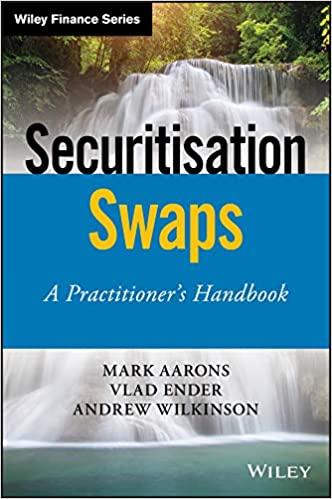Question
Conglomerate Inc is a multinational business that owns many companies in many different countries. All the companies use the $ as their currency. Each of
Conglomerate Inc is a multinational business that owns many companies in many different countries. All the companies use the $ as their currency. Each of the five scenarios is independent of the others.
Requirement 1
Ay Inc sells three products. The budgeted fixed cost per month is $500,000. The budgeted contribution to sales ratio (C/S ratio) and sales mix per month are as follows:
| Product | Sales mix. | C/S ratio |
| Loop | 38% | 22% |
| Moop | 40% | 35% |
| noop | 22% | 43% |
What is the breakeven sales revenue per month? Show all workings
Requirement 2
Bee Inc manufactures and sells a single product (the dazzler) $30 per unit. In August, budgeted volume was 80,000 units, the margin of safety was 27% and the budgeted contribution to sales ratio was 32%.
What were the budgeted fixed costs for August? Show all workings
Requirement 3
Cee Inc sells vitamin tablets and vitamin supplements. The tablets are sold every week and the supplements are sold every month. The unit costs for each are:
| Vitamin tablets ($) | Vitamin supplements ($) | |
| Selling Price | 3.00 | 6.00 |
| Direct Materials: ingredients | 0.70 | 1.20 |
| Direct Materials: packaging | 0.35 | 0.50 |
| Direct Labour | 0.10 | 0.30 |
| Variable overhead | 0.20 | 0.40 |
| Fixed overhead | 1.10 | 1.30 |
Budgeted production is 1,500 units per week of the vitamin tablets and 3,200 units permonth of vitamin supplements
If the vitamin tablets and vitamin supplements are sold in their budgeted mix, what is the
budgeted breakeven revenue? Show all workings.
budgeted breakeven revenue? Show all workings.
Dee Inc manufactures and sells three products, the alpha, the gamma and the epsilon. Data on the three products is as follows:
| Alpha | Gamma | Epslon | |
| Financial | $ | $ | $ |
| Selling price | 104 | 98 | 112 |
| Direct materials | 30 | 36 | 26 |
| Direct labour ($18 per hour) | 36 | 27 | 54 |
| Variable overhead | 12 | 9 | 18 |
| Other: | Units | Units | Units |
| Expected demand | 4000 | 3000 | 1200 |
At present, there are only 12,000 labour hours available.
How will these products be ranked in order to determine the optimum production plan? Show
all workings.
Requirement 5
One of the managers at Eee Inc has made the following statements about cost-volume-profit (CVP) analysis:
-
CVP analysis allows for fluctuating selling prices.
-
CVP analysis assumes productivity remains unchanged.
-
CVP analysis assumes that the only factor affecting cost is volume.
Which of the above statements is/are false?


Step by Step Solution
There are 3 Steps involved in it
Step: 1

Get Instant Access to Expert-Tailored Solutions
See step-by-step solutions with expert insights and AI powered tools for academic success
Step: 2

Step: 3

Ace Your Homework with AI
Get the answers you need in no time with our AI-driven, step-by-step assistance
Get Started


